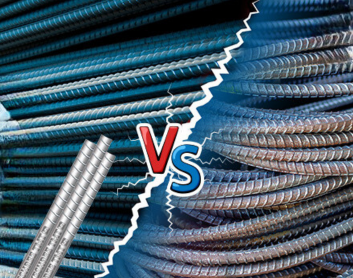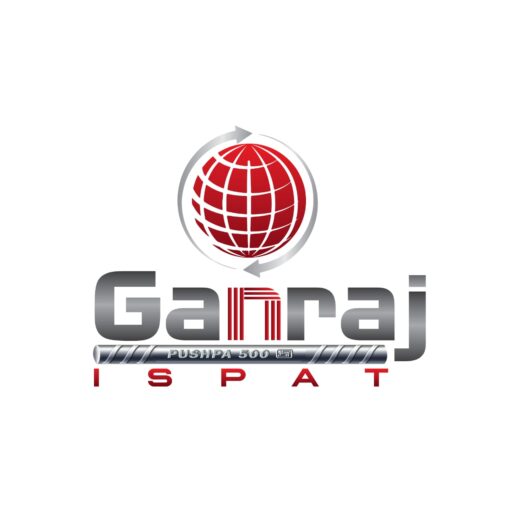
When it comes to construction, selecting the right materials is crucial for ensuring the durability, strength, and safety of a building. One of the most important decisions in modern construction is choosing between TMT Bars Vs Traditional Bars. Both have their merits, but there are distinct differences that can affect the outcome of your project. This article will explore the difference between TMT Bars Vs Traditional Bars, highlighting why TMT bars are increasingly becoming the preferred choice for builders and engineers.
What Are TMT Bars?
Thermo-Mechanically Treated (TMT) bars are high-strength reinforcement bars that have undergone a special process of heating and cooling, which gives them superior properties compared to traditional steel bars. TMT bars are known for their toughness, flexibility, and corrosion resistance, making them a popular choice for modern construction projects.
What Are Traditional Bars?
Traditional bars, often referred to as mild steel bars or tor steel, are reinforcement bars made from mild steel or low-carbon steel. They are not as technologically advanced as TMT bars and lack several key features, such as corrosion resistance and high tensile strength, which are vital in today’s construction standards.
Difference Between TMT Bars Vs Traditional Bars
Understanding the difference between TMT Bars Vs Traditional Bars is essential for making an informed decision in construction. Below are some key distinctions between the two:
1. Strength and Durability
– TMT Bars: TMT bars are stronger and more durable than traditional bars. Their thermo-mechanical treatment process gives them a high tensile strength, allowing them to bear more load. This makes TMT bars ideal for high-rise buildings, bridges, and other heavy structures.
– Traditional Bars: Traditional bars are less durable and have lower tensile strength compared to TMT bars. They are prone to bending and deformation under high stress, which can compromise the integrity of a structure over time.
2. Corrosion Resistance
– TMT Bars: One of the major advantages of TMT bars is their excellent corrosion resistance. The outer layer of TMT bars is hardened through the quenching process, making them resistant to rust even in humid or coastal environments.
– Traditional Bars: Traditional bars lack corrosion resistance, making them susceptible to rusting over time. This can weaken the structure and lead to costly repairs or replacements in the future.
3. Flexibility and Ductility
– TMT Bars: TMT bars are more flexible and ductile than traditional bars. Their soft inner core allows them to bend without breaking, which is crucial in areas prone to earthquakes. This flexibility helps TMT bars absorb the energy from seismic waves, reducing the risk of structural failure.
– Traditional Bars: Traditional bars are less flexible and more brittle, making them prone to cracks and breakage, especially under dynamic loads like those caused by earthquakes or heavy machinery.
4. Fire Resistance
– TMT Bars: TMT bars have excellent fire resistance, with the ability to withstand temperatures up to 600°C. This makes them a safer choice for buildings, as they provide additional protection against fire hazards.
– Traditional Bars: Traditional bars do not offer the same level of fire resistance as TMT bars, making them a less safe option in the event of a fire.
5. Bonding Strength with Concrete
– TMT Bars: TMT bars have a ribbed surface, which provides better bonding with concrete. This enhanced bonding strength ensures that the reinforced concrete structure can withstand high loads and external forces, such as earthquakes or high winds.
– Traditional Bars: Traditional bars have a smooth surface, which results in a weaker bond with concrete. This can affect the overall strength and stability of the structure.
6. Cost-Effectiveness
– TMT Bars: While TMT bars may have a higher initial cost compared to traditional bars, they offer long-term savings due to their durability, low maintenance, and corrosion resistance. This makes them a more cost-effective option in the long run.
– Traditional Bars: Traditional bars are generally cheaper upfront, but their lack of durability and resistance to corrosion often leads to higher long-term costs due to repairs, replacements, and maintenance.
7. Environmental Impact
– TMT Bars: The manufacturing process of TMT bars is more environmentally friendly compared to traditional bars. TMT bars are made from recycled steel and require less energy during production, reducing the carbon footprint of a construction project.
– Traditional Bars: Traditional bars, on the other hand, are not as sustainable and often contribute more to environmental degradation due to their lower durability and shorter lifespan.
TMT Bars Vs Traditional Bars: Which Is Better?
In the debate of TMT Bars Vs Traditional Bars, the answer depends on the type of construction project and specific requirements. However, TMT bars are generally considered the superior option for several reasons:
1. Higher Strength and Durability: TMT bars offer better tensile strength, making them more suitable for large and high-rise constructions.
2. Corrosion and Fire Resistance: TMT bars outperform traditional bars in both corrosion and fire resistance, ensuring a longer lifespan for the structure.
3. Flexibility: The flexibility and ductility of TMT bars make them the better choice for earthquake-prone areas, where structural safety is paramount.
4. Cost-Effective in the Long Run: While TMT bars may be more expensive initially, their long-term benefits, such as reduced maintenance and repairs, make them a more economical choice.
TMT Bars Vs Traditional Bars in India
In India, the construction sector is rapidly evolving, with more and more builders opting for TMT bars over traditional bars. This is due to the increasing demand for durable, safe, and environmentally friendly buildings. Given the frequent seismic activity in certain parts of India, the flexibility and earthquake resistance of TMT bars are particularly important.
Traditional bars are still used in smaller, low-budget projects or in areas where the structural load is not as significant. However, for most modern and large-scale constructions, TMT bars have become the preferred choice due to their superior properties.
Why TMT Bars Are the Future of Construction
The growing focus on sustainable and resilient construction has further increased the demand for TMT bars. As more emphasis is placed on safety, longevity, and environmental impact, the **role of TMT bars** in modern construction is becoming irreplaceable. Whether it’s residential, commercial, or infrastructure projects, TMT bars are emerging as the go-to reinforcement material for engineers and architects around the world.
Conclusion
In conclusion, when comparing TMT Bars Vs Traditional Bars, TMT bars clearly emerge as the better option for most construction projects. Their superior strength, corrosion resistance, flexibility, and fire resistance make them a far more reliable and sustainable choice. Whether you’re constructing a high-rise building, a bridge, or even a residential home, opting for TMT bars will ensure the structure’s longevity and safety. For more details on TMT bars and their benefits, contact us at: Plot No: A-3, Nagar-Pune Road, Supa Parner Industrial Area, Supa, Parner, Ahmednagar – 414003. +91 9766173352. sales@ganrajispat.com. Visit our website www.pushpasteel.com

Recent Comments